VISITS
I visited two institutions in Glasgow and one in Edinburgh to decipher what is meant by minor/major galleries and how this impacts on ways art is shown and talked about. I had not been to Glasgow Women’s Library or Gallery of Modern Art before so I saw this as an opportunity to familiarise myself with art spaces in the area. These two spaces are very different aesthetically and functionally but both seek the position of inclusivity and take an advantageous approach to their archives. Fruitmarket could be placed in the middle of these when considering the minor/major question proximately, considering the individual exhibitions I encountered, due to a coherence of values based within the artistic, social and economic.
Glasgow Women’s Library (1991): I enter here to the sound of chatter from people gathered around tables with a stipple of books around them. I first see Gathering Stitch located on the ground floor in the form of two tapestries hanging on the wall and a sound installation to go with them. Created by participants of the Survivor Arts Community, this exhibition confers with the library’s mission of outreach and championing women’s voices and history. I am then shown upstairs (because of a temperamental door) to the Vanessa Baird exhibition which takes up a small space of two parallel walls. I Get Along Without You Very Well consists of a series of watercolours, often occupied by text, giving us a glimpse into her life with a brutal honesty showing the bravery of a female artist to show the world her inner self and circumstances, in the hope to bring succour, resonance and encouragement to others (Gilly Fox, Curator). The paintings were made in response of the museum and archive; we encourage an approach to life based on continuous inquiry, reflection and free expression (website). These works are close together giving the series an almost comic appeal in viewing them; a humorous attitude of the works echoes throughout the surrounding space of tiles, cupboards and a sink. I enjoyed being in this DIY, open, caring, cosy, small, unique, important space.
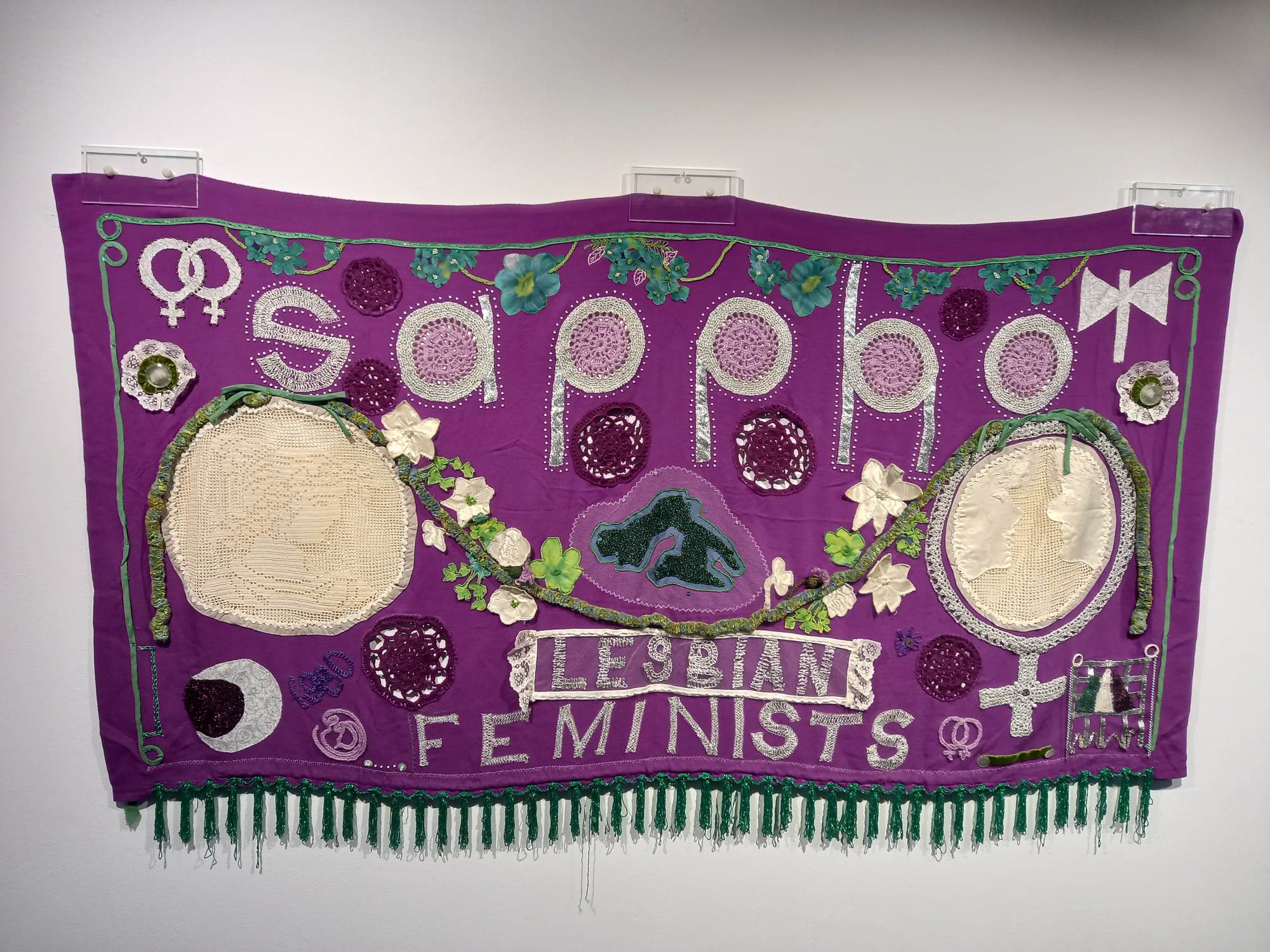
Sappho Lesbian Feminists Banner, mixed media
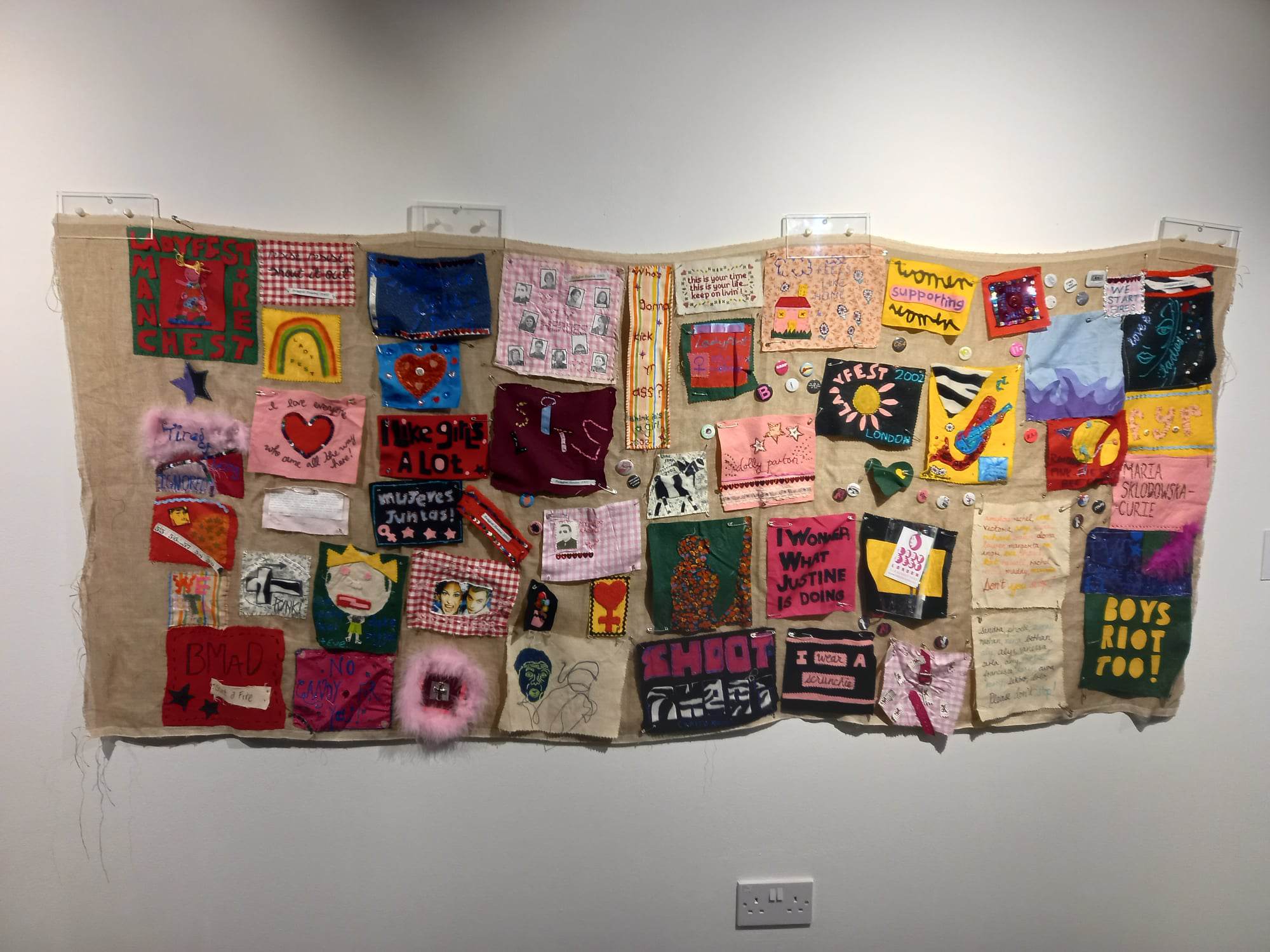
Ladyfest Manchester Banner, 2016, mixed media, hessian base
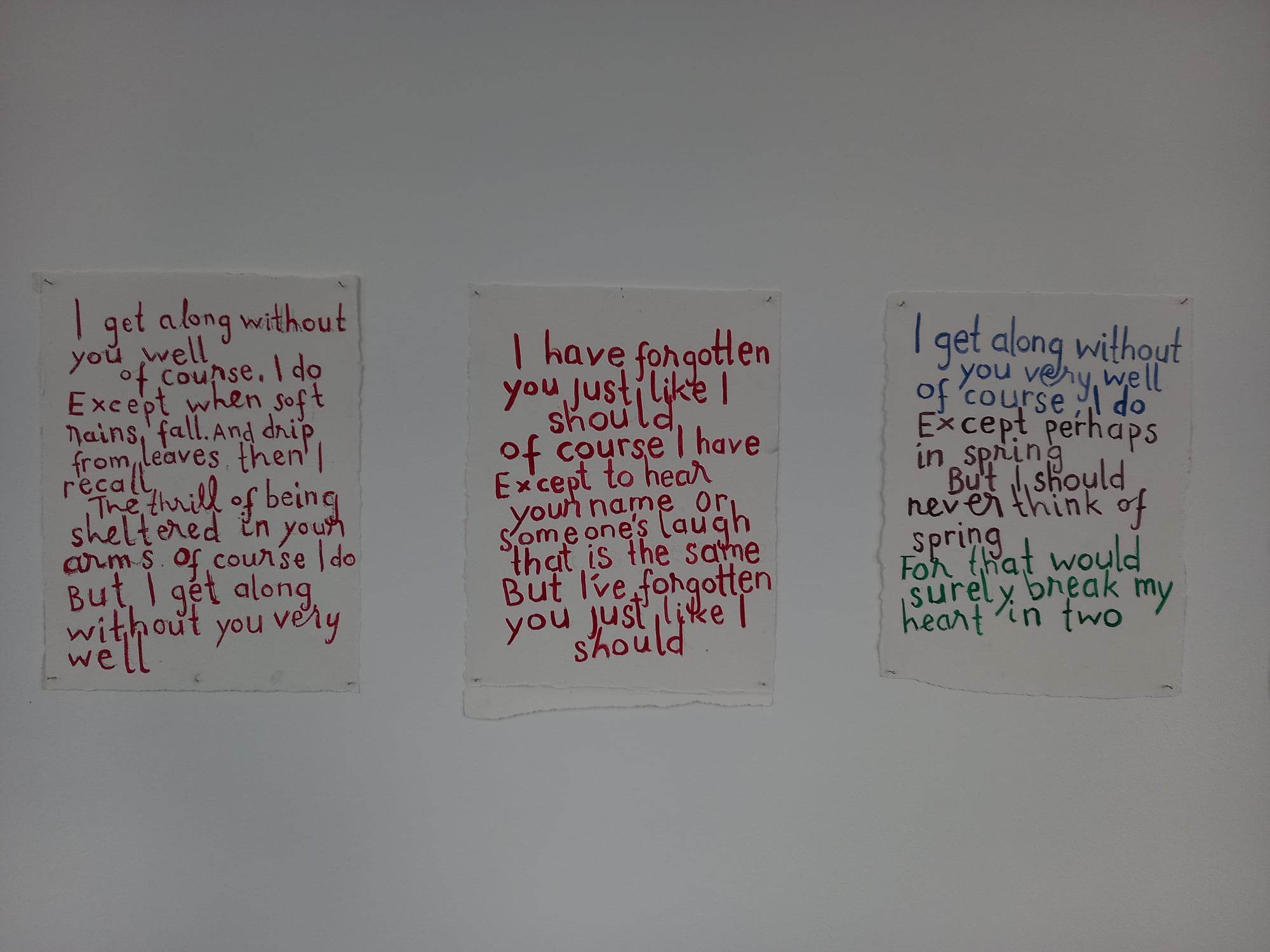
I Get Along Without You Very Well, Vanessa Baird

I Get Along Without You Very Well, Vanessa Baird

I Get Along Without You Very Well, Vanessa Baird
Gallery of Modern Art: it’s a different feeling of walking into such a huge ornate gallery with pillars and mosaic floors. You have a good feeling of what you will be greeted with on the other side of the door- uniforms, multiple shops and an overpriced cafe. I see an exhibition called Taste on the second floor, consisting of artworks from the Glasgow Museums by highly recognisable artists. Alongside these works are archive materials concerning collecting and exhibiting within GoMA’s history; this feels like a fresh idea of being transparent with archival material and may be highlighting the over-consumption of these selected works. The space, to me, does have a tiredness to it (I have seen Campbell’s Soup too many times now) which could come with reexamining artworks from collections under differing lenses. The combination of these works and archives reframes the context of them within the gallery, offering us to look into their (and the gallery as a whole) curatorial histories.

Taste, GoMA

Taste, GoMA
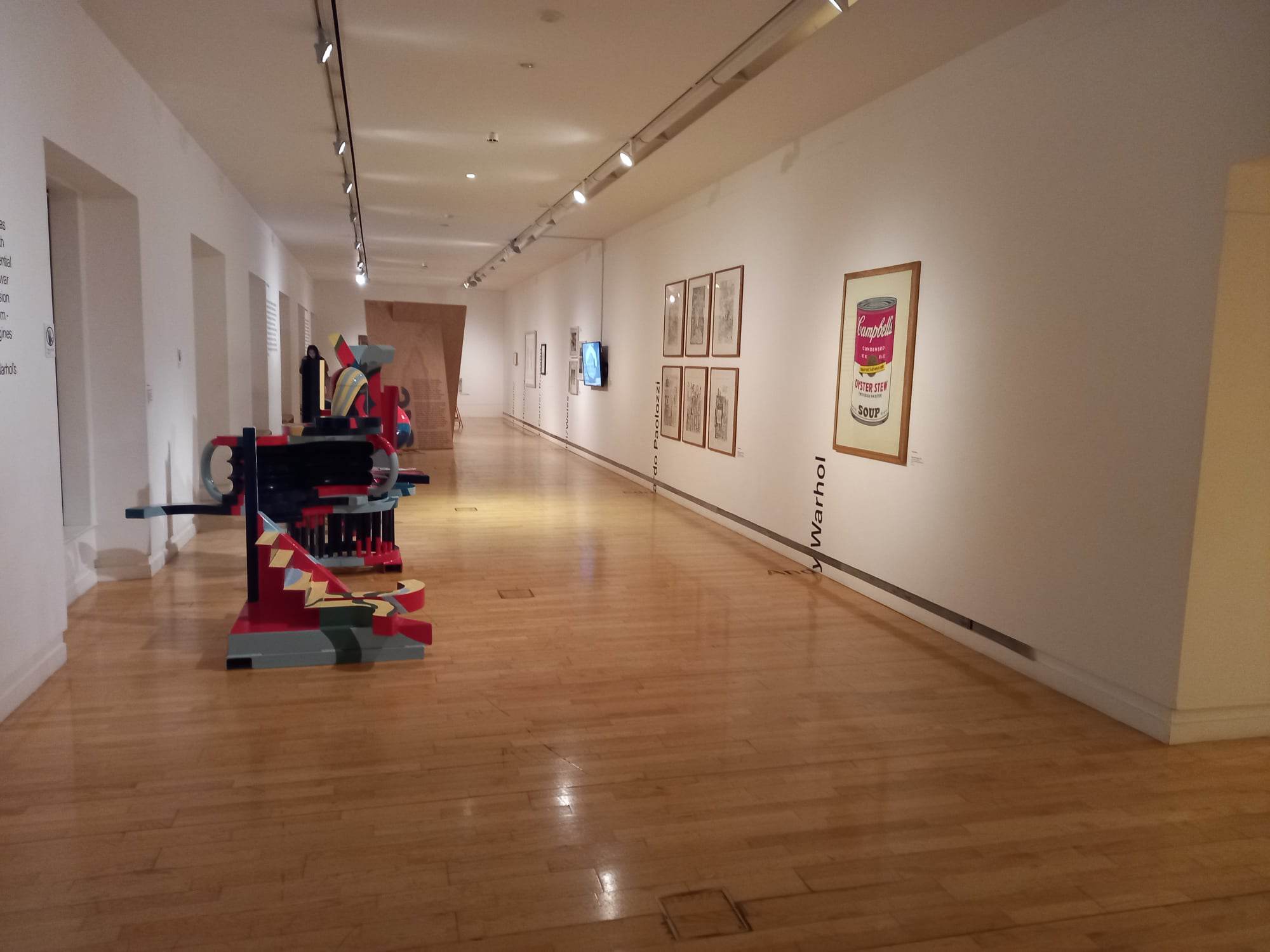
Taste, GoMA
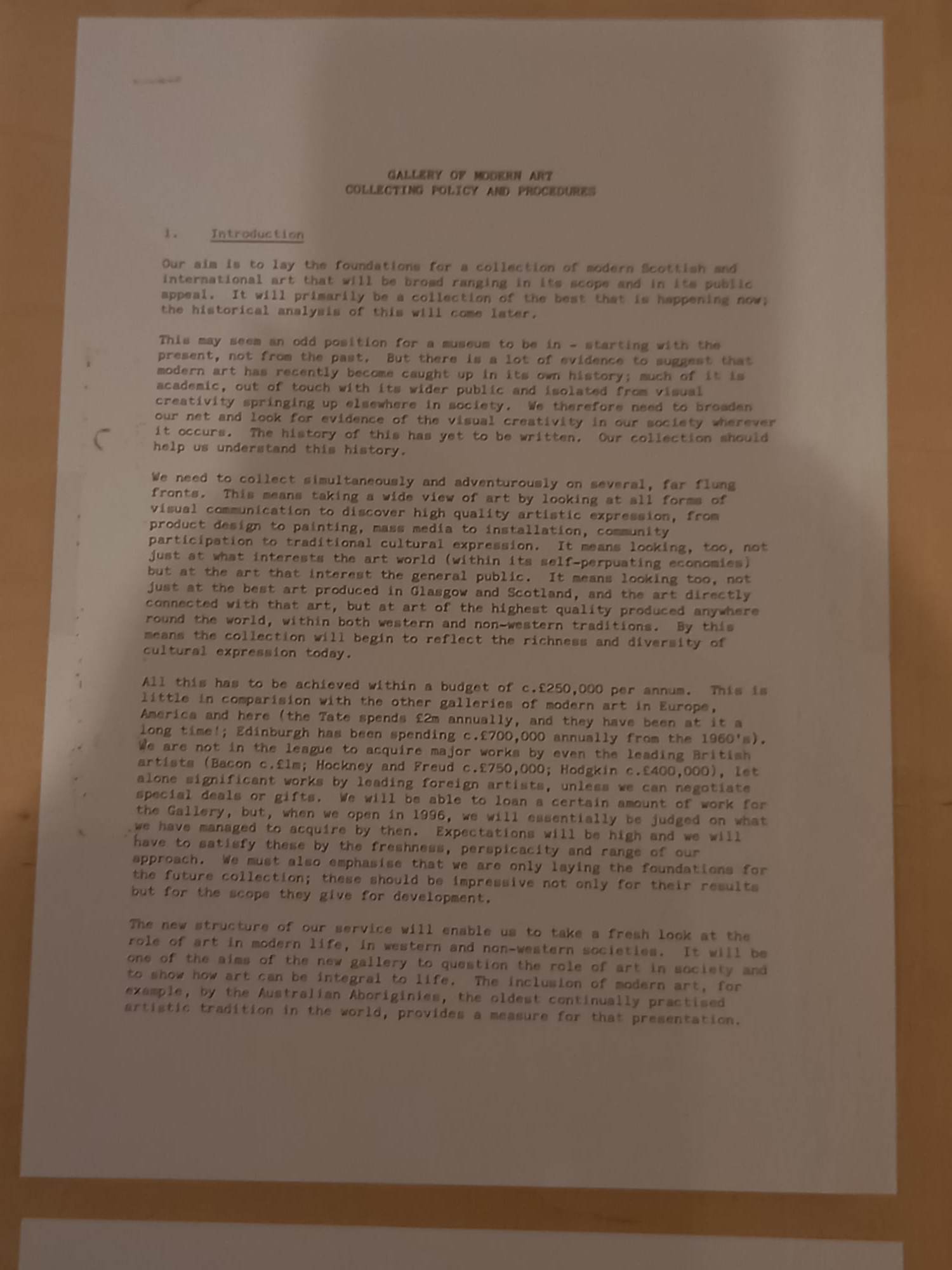
Taste, GoMA
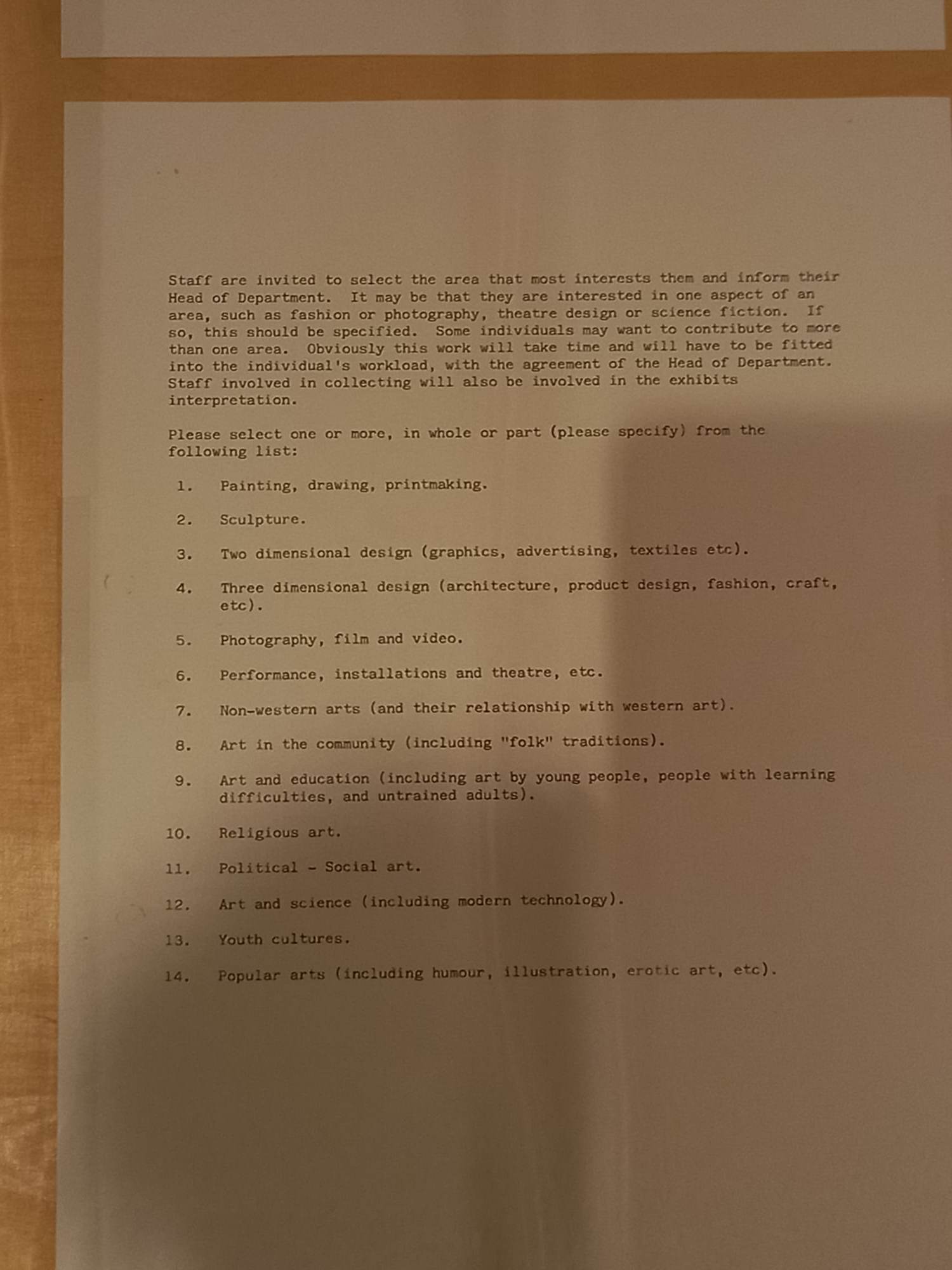
Taste, GoMA
Fruitmarket: a familiar layout of shop-cafe-gallery space which makes it difficult to not look at the cool cards and books on display before reaching the art. Hayley Tompkins has taken advantage of the division of spaces within the gallery- downstairs, small space on the right and upstairs. This exhibition, Far, propositions objects as a form of commonality and belonging that we, as the viewer, can take part in. I attempt to scan the barcode to get more information but am faced with two long adverts. As I approach the space there are lots of sounds (clicking and voices?) happening and the images on multiple screens disappear before I can think about them. I ask the gallery assistant what the clicking sound is but he doesn’t know. This is contrasted upstairs where paintings populate the walls; a single bucket that ties it to what I have just seen downstairs. This conflating imagery is described by Tompkins as trying really to see something.

Far, Hayley Tompkins

Far, Hayley Tompkins

Far, Hayley Tompkins

Far, Hayley Tompkins
READING
Andrew Hunt: Minor Curating?
global/utopian local/incomplete
The power that comes with central organisations and how minor organisations can change habits and styles; this may be remedied by looking through lenses of humour and humility to deterritorialize this idea of major and periphery, it may be possible for a new form of programming, or a minor curating that stammers of stutters, to counteract the prevailing order of things (A.Hunt, pg.155). By ways of abandoning notions of postmodern irony and its absence of meaning to replace this with humility and openness to interrupt existing elitist attitudes, irony is now more likely to be used to construct prescribed meaning rather than to underdetermine set truths (pg. 156), this premeditative encounter with irony can be disrupted with humorous outlooks; translating into exhibition-making. These ideals can push the medium (exhibition-making) through new and as yet unseen forms in unlikely locations’ (pg. 160).
Rachel Mader explores this small/minor rhetoric, looking at small scale visual arts organisations in the UK. When a new art institution is founded relevance is often cited as the central argument in its favour, it being vital criteria to engage with the world surrounding the organisation and what it will critically produce. ‘Instumentalism..as old as civilisation itself, what is new, however, is the fixation on measurement and proven effects‘, how do we put this into motion and witness its outcomes? Using examples of organisations, Mader aims to measure relevance as a whole within the arts and how individual spaces exert this. ICA: displayed commitment to the social significance of art by raising their audiences awareness through public events..organised a variety of public forums, of which the first in 1949, was entitled Is Art and Essential or an Accessory to Society?/explicitly stated commitment to a new kind of space for cooporative, experimental and non-established artistic production/ their decision to use the term institute instead of museum, a position that has arrived at after a lengthy and controversial debate marked a terminology boundary against an artistic conservationism. ACME: acted from the sheer necessity in the face of a lack of affordable studios. Artangel: first leaflet included relevant among their aims as a production and promotion company…later becoming characteristically curatorial/ 1980’s-economic viability-the previously rather autonomous discourse around the field of art, which was based upon notions of excellence was increasingly replaced with insistent demands for art to be more economically viable, for example, by achieving widespread impact and visibility. Beaconsfield: self perception rooted in a passion for experimental and interdisciplinary practices/wished to provide a space for the development and presentation of the practices while also inspiring an audience to engage with this kind of art/ education, outreach, dialogue- listed by founders to justify the aims of their activity with regard to possible social contexts/ name of place- (implications?), these declared intentions returned in the form of demands from government funders.
(2010) Minor Curating?, Journal of Visual Art Practice, 9:2, 153-161, DOI: 10.1386/jvap.9.2.153_1
On Curating: Interview with ten International Curators- Carolee Thea
Massimiliano Gioni- 2007
Berlin Biennial- Of Mice and Men – 2006
Inquiries of ways of curating a Biennial, how spaces for this are compromised and how location can impact theme and way exhibitions are experienced.
Gioni, along with Maurizio Cattelan and Ali Subotnick curated the fourth Berlin Biennial on one street (auguststrasse) in a range of buildings and outside spaces. To adopt spaces where you still feel the presence of embedded history is compelling, and Berlin is a multi-layered place where much of the architecture contains a legacy of stories, legends and memories. This included the Former Jewish Girls School which was shut by the nazis in 1942 but remains a space for temporary exhibitions events due to being historically and aesthetically significant. How to align places of great history and trauma with curatorial practices or shows such as the biennial? How is this negotiated- first you have to define what is political- ability to realise exhibitions without own politics getting in the way. Monuments of industrial archaeology being an attempt to turn us away from the established circuit of art institutions/create a new one where the viewer can participate. Are more ‘obvious’ spaces like Martin-Gropius-Bau limiting to curators and artworks themselves? Why are abandoned or less likely places more liberating? Less rules? Less pre-established ideas? Our idea of using one street 920 metres long was cinematic- like a daydream or a movie. Research into Blue Highways- things that correspond and correlate to give depth to an idea- portraits of people living in each room of a tall building..instead of a sprawl it’s a vertical hyper concentration. There is a tiredness to the biennial structure which needs to be remedied through explorations of the site-specific and unique locality. Our idea evolved to include the philology of a place- to amplify and preserve the fugitive voices already present- and the artwork we introduce would function as a guest. How to place or intertwine these voices onto curatorial ideas. It’s the tourist area, concerns with exhibiting in the gentrified Auguststrasse, how does this enter the battle of history, voice and the empty? The main actor of the 90s was the curator and now it is the collector, the new model of the 90s was the biennial and now it is the art fair. It goes in cycles, but without the artist none of this exists.

Former Jewish Girls School

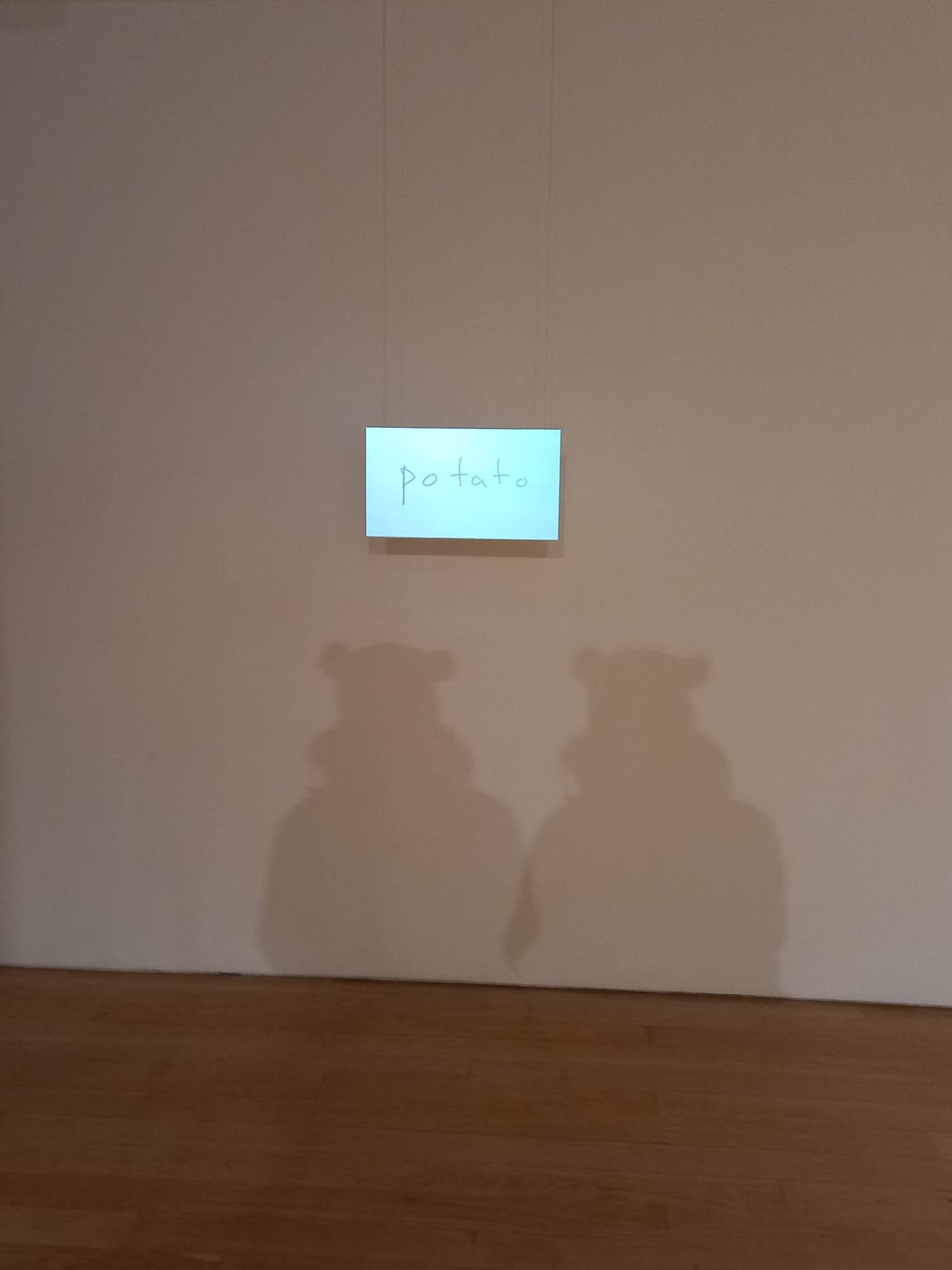


Leave a Reply